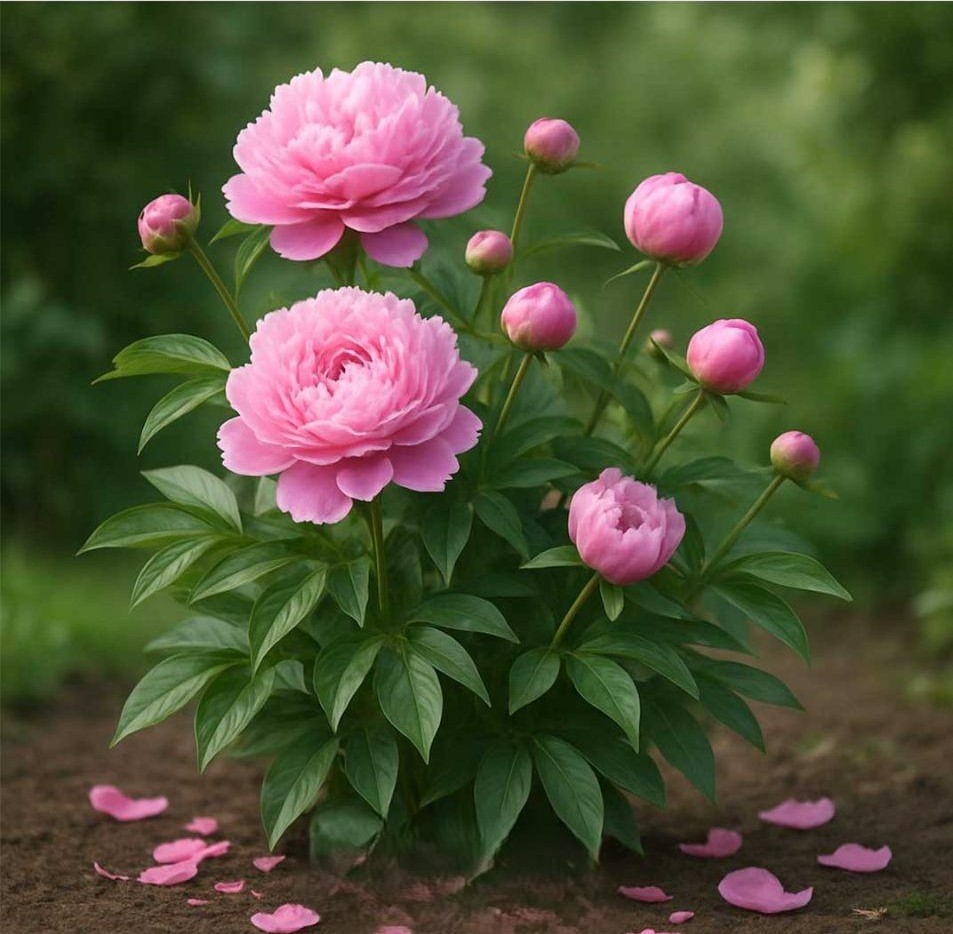ADVERTISEMENT
“`html
Loving Your Peonies: Post-Bloom Care for a Thriving Garden
Peonies, with their lush, fragrant blooms and elegant presence, are a cherished addition to any garden. But once the spectacular show fades, many gardeners wonder, “What now?” Don’t let the blossoming end be the end of your care! Post-bloom maintenance is key to ensuring your peonies return even stronger next year, rewarding you with an even more vibrant display.
Follow this step-by-step guide to the 10 essential tasks you should tackle after your peonies bloom – plus a bonus tip many gardeners overlook!
1. Deadhead Spent Blooms
Deadheading – removing spent flowers – redirects the plant’s energy from seed production to strengthening its roots and foliage. This simple act is a powerful boost to your peony’s health.
-
How to do it: Snip just above the first set of healthy leaves using sharp, clean pruners.
-
Why it matters: Encourages continued growth and prevents diseases from spreading from decaying flowers.
💡 Bonus: Deadheading throughout the bloom period can extend flowering time for some varieties.
2. Fertilize to Recharge
Flowering takes a lot out of your peony. Replenish those vital nutrients with a balanced, slow-release fertilizer (like 10-10-10).
-
How: Apply about ½ cup per plant, around the drip line (avoiding contact with the stems).
-
When: Right after flowering ends, followed by deep watering. This supports root health and prepares the plant for next year’s blooms.
3. Water Deeply and Consistently
As peonies shift their focus to root and foliage development, they need steady moisture.
-
Watering Tip: Aim for 1–2 inches per week, preferably via a soaker hose to avoid wetting the leaves.
-
When: Early in the day to reduce disease risk.
Proper watering now means stronger plants and more vigorous growth next spring.
4. Mulch for Moisture and Weed Control
Mulch helps lock in moisture, smother weeds, and regulate soil temperature.
-
How: Apply a 2–3 inch layer of compost, bark, or straw around the base.
-
Avoid: Direct contact with stems to prevent rot.
Mulching also adds organic matter to enrich your soil over time.
5. Check for Pests and Diseases
Post-bloom is the perfect time to inspect your plants.
-
Pests: Look for aphids, thrips, or ants; treat with insecticidal soap or neem oil.
-
Diseases: Powdery mildew and botrytis are common—remove affected foliage and increase air circulation.
Proactive care now prevents bigger problems later.
6. Prune to Maintain Shape
Light pruning improves air flow and plant health.
-
Trim away: Any dead, damaged, or diseased stems.
-
Fall Task: Once foliage naturally dies back, cut stems to 2″ above the soil. This helps your peony rest well over winter and reduces overwintering pests and pathogens.
7. Support the Stems
Peony stems are prone to flopping, especially after heavy rain.
-
Solution: Install peony rings or garden stakes early in the season.
-
For established plants: Carefully lift stems and place supports without damaging foliage.
Proper support keeps your garden looking tidy and your plants stress-free.
8. Divide if Plants Are Overgrown
If your peonies are producing fewer blooms or getting crowded, fall is the time to divide them.
-
How: Gently dig up the clump and cut into sections, each with 3–5 “eyes” (buds).
-
Replant: At original depth, spacing divisions about 3 feet apart.
Division rejuvenates tired plants and gives you more peonies to plant or share.
9. Plan for Next Year
Take a moment to reflect on your peony garden.
-
Ask: Were they getting enough sun? Was soil quality good? Any disease issues?
-
Plan ahead: Adjust spacing, improve soil, or add new varieties for staggered blooms.
Good planning now sets you up for a spectacular display next year.
10. Share the Joy
Cut some of those gorgeous blooms to give away—even after peak bloom.
-
Best time to cut: Early morning, just as blooms are starting to open.
-
Care: Place in clean water, changing it every two days to extend vase life.
Peonies are too beautiful not to share!
✅ Bonus Tip: Document Bloom Timing and Care Notes
Create a simple garden journal:
-
Note when your peonies bloomed, how long they lasted, and which varieties performed best.
-
Include details on fertilizer used, pest issues, or weather conditions.
This info helps fine-tune your care year after year—and makes you a smarter gardener.
Final Thoughts 🌿
Peonies might be low-maintenance, but giving them the right post-bloom care ensures their longevity and stunning return season after season. With these simple but critical steps, your garden will reward you with healthier plants, more blooms, and less stress.
Would you like this guide turned into a printable checklist or shareable graphic? Let me know—happy gardening! 🌷
“`
